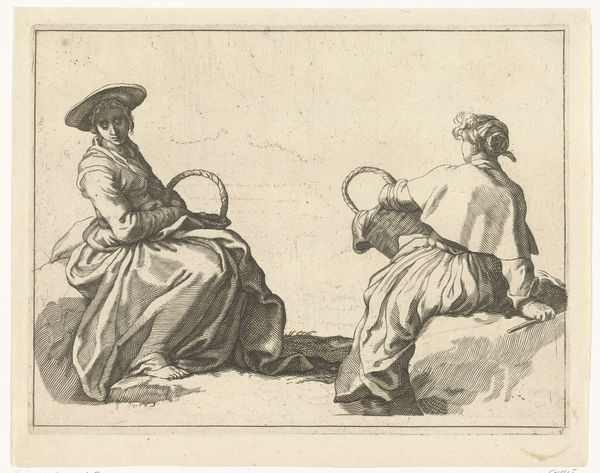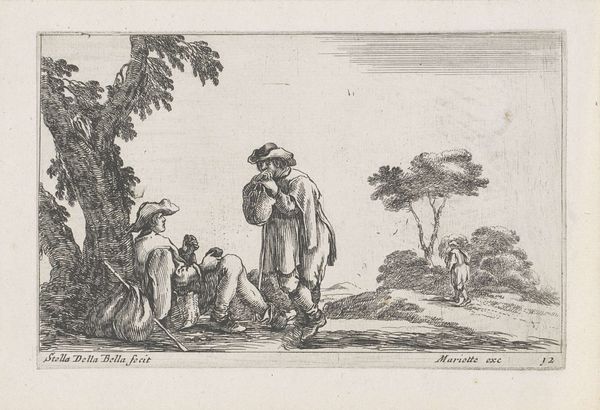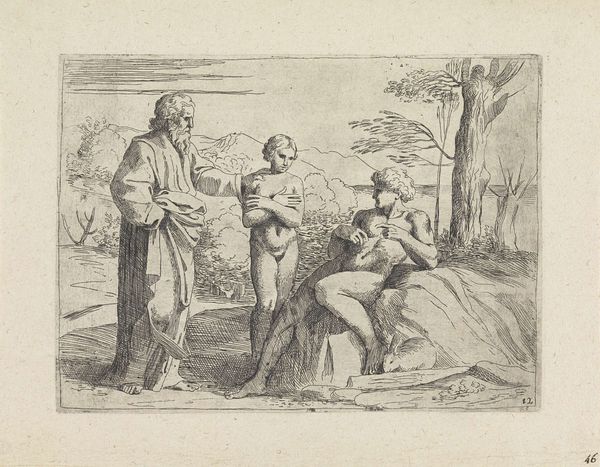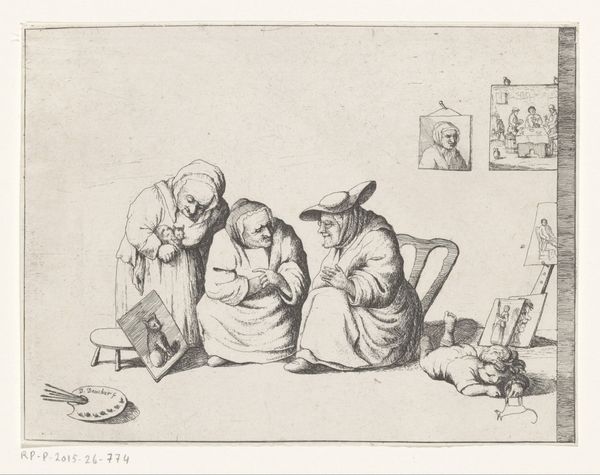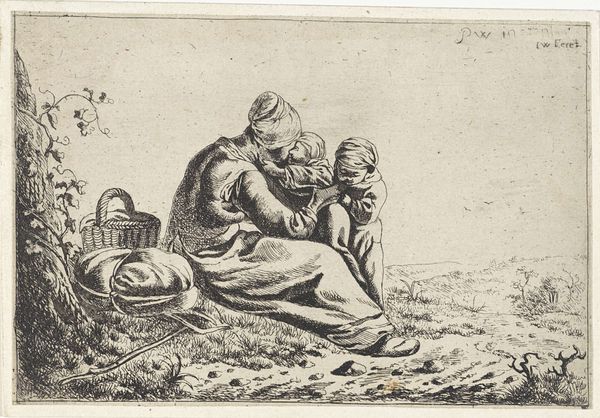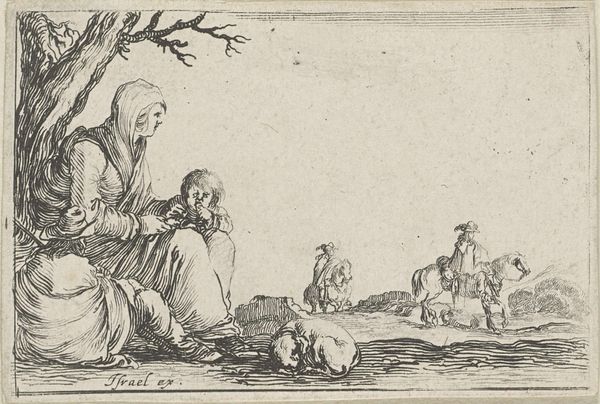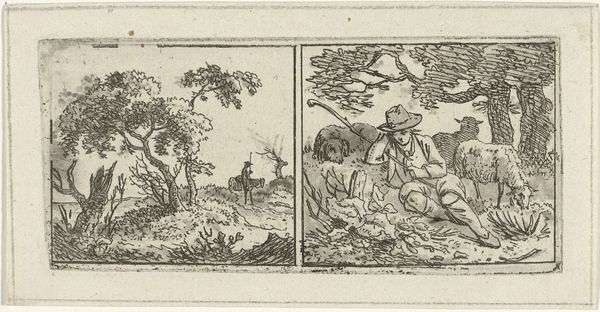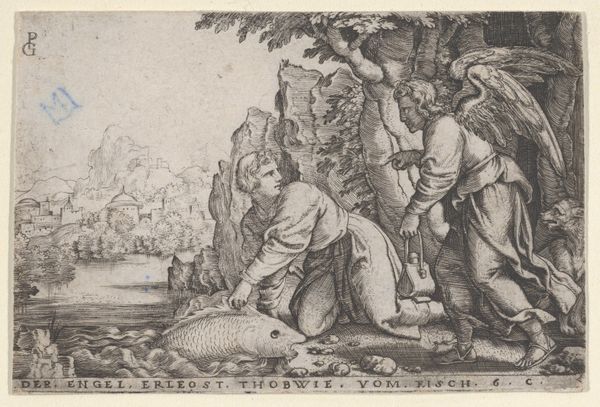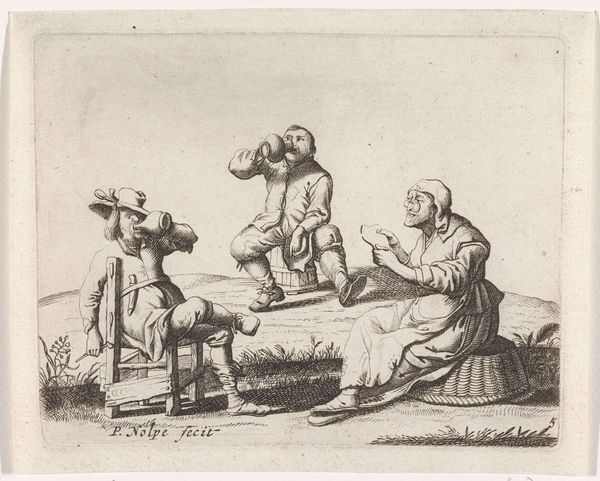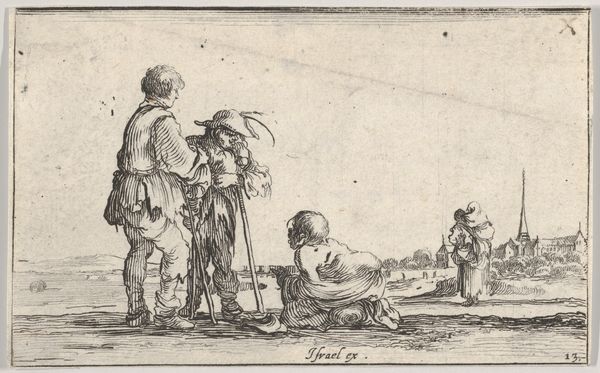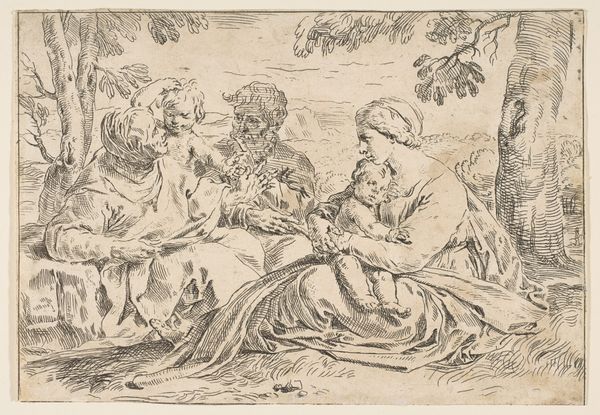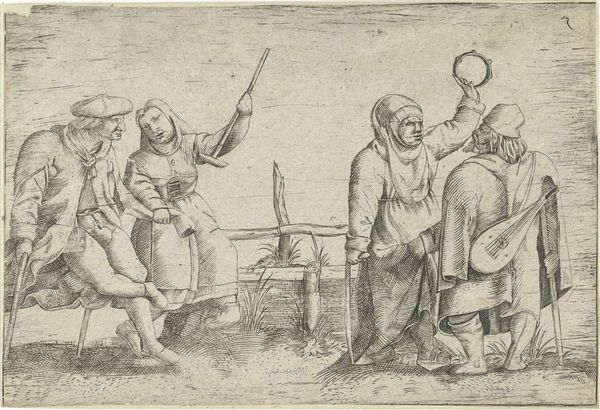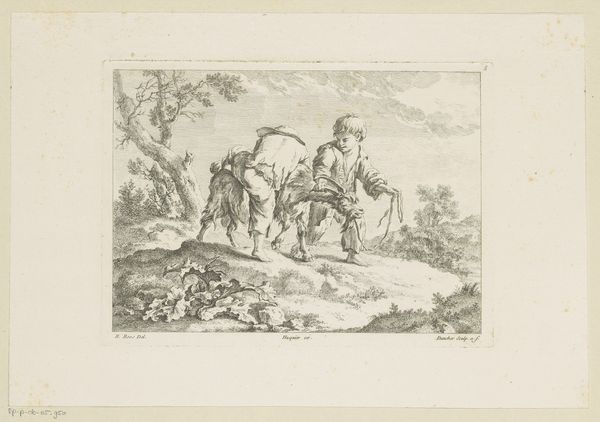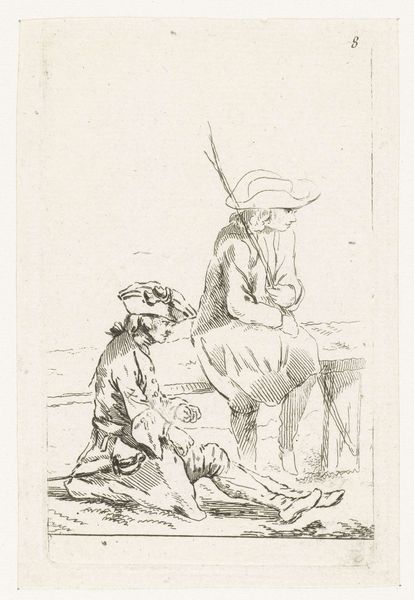
print, etching
#
dutch-golden-age
# print
#
etching
#
landscape
#
figuration
#
genre-painting
Dimensions: height 90 mm, width 118 mm
Copyright: Rijks Museum: Open Domain
Editor: So, here we have "Vrouw en man met eieren," or "Woman and man with eggs," by Frederick Bloemaert, dating from after 1635. It's currently housed at the Rijksmuseum. As an etching, it has a delicacy to it that's really striking, a kind of intimate feel despite depicting everyday figures. What catches your eye in this scene? Curator: The figures' postures. Note how the woman sits beneath the tree, almost integrated with its roots. It's a symbol of rootedness, of belonging to the land. The man, leaning on the basket, seems more transient, a peddler perhaps. Eggs, themselves, are potent symbols: potential, birth, fragility. The basket becomes a vessel of hopes and dreams, quite literally carried on his shoulders. Editor: So the eggs are more than just breakfast, then? Curator: Oh, absolutely. In Dutch Golden Age painting, even seemingly simple genre scenes are often layered with symbolism. Consider, too, the gaze of the figures. She looks inward, contemplative. He seems to be looking towards us as the implied receiver. It could speak to broader ideas about the cycles of life, about our connection to the natural world. It's a contrast, wouldn’t you say? He is focused on labour, commerce perhaps, whilst she reflects. Editor: It's funny, I just saw two people with some eggs, and now I’m seeing so much more. I'll have to pay more attention to gestures! Curator: Indeed! Looking for the symbols woven into everyday imagery provides endless fascinating layers, once you know to see it. Editor: I guess what's mundane for some can become powerfully meaningful for others, depending on your perspective and culture! Thanks.
Comments
No comments
Be the first to comment and join the conversation on the ultimate creative platform.
